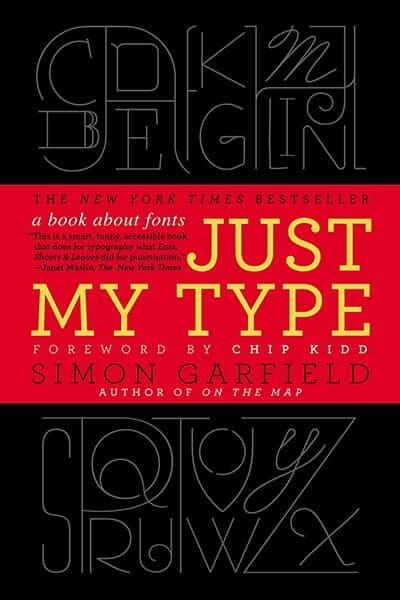Designing for People Book Summary
In 'Designing for People', Henry Dreyfuss lays the groundwork for human-centered design, championing the idea that products should serve people’s needs and enhance their experience. Through insightful case studies and engaging anecdotes, Dreyfuss reveals how understanding human behavior can lead to innovative and functional designs. He shares practical methods for observing and interpreting user interactions, emphasizing the importance of empathy in the design process. This book is not just a manual for designers; it's a fascinating exploration of the relationship between humans and the objects they use. Will Dreyfuss' principles inspire you to rethink the way we interact with the world?
By Henry Dreyfuss
Published: 2003
"Good design is a lot like clear thinking made visual."
Book Review of Designing for People
A cult read amongst designers for more than half a century, this text is the manifesto of America's greatest industrial designer and the pioneer of a design approach that put people first. Dreyfuss was the designer of the first answering machine, the Hoover vacuum cleaner, the Bell telephone, and much more.
Book Overview of Designing for People
About the Book Author
Henry Dreyfuss
Henry Dreyfuss was a prominent American industrial designer known for his innovative work in product design and user-centered design philosophy. He was instrumental in designing iconic everyday objects, including the Honeywell thermostat and the Western Electric model 500 telephone. Dreyfuss's writing often reflects his belief in the importance of ergonomics and the user experience, emphasizing functionality, simplicity, and aesthetic beauty. Notable works include 'Designing for People', where he shares his insights on design and its impact on human interaction with products. His approach combined practicality with artistic sensibility, making his work timeless and influential in the field of industrial design.
Book Details
Key information about the book.
- Authors
- Henry Dreyfuss
- Published
- January 2003
- Publisher
- Skyhorse Publishing Inc.
- ISBN
- 1581153120
- Language
- English
- Pages
- 289
- Genres
- Design ThinkingDesign
Purchase Options
Support local bookstores: BookShop gives a portion of each sale to independent bookshops!
Similar books you might like →
Just My Type Book Summary
In 'Just My Type', Simon Garfield explores the fascinating world of typography and its profound impact on our daily lives. From the iconic fonts that define culture to the hidden messages conveyed through typeface choices, Garfield uncovers the artistry and science behind each letter. Readers are taken on a journey through history, tracing the evolution of fonts and their creators, igniting a newfound appreciation for the words we often overlook. With humor and insight, the book invites us to rethink the way we view text and design. Prepare to look at the printed word in an entirely new light!
Cloud Atlas Book Summary
In 'Cloud Atlas,' David Mitchell weaves a complex tapestry of interconnected stories spanning centuries and genres, from a 19th-century voyage on the Pacific to a post-apocalyptic future. Each narrative links to the others, creating a profound exploration of the impact of our choices across time and space. As characters reincarnate and influence one another, mysterious themes of love, power, and freedom emerge. The novel raises intriguing questions about the nature of time and existence, urging readers to consider their own place in the grand design. With its inventive structure and lyrical prose, 'Cloud Atlas' invites you to unravel the delicate threads that connect us all.
Hackers & Painters Book Summary
In 'Hackers & Painters,' Paul Graham explores the fascinating parallels between the worlds of programming and art, highlighting how both disciplines require creativity, vision, and craftsmanship. He delves into the lives of hackers, uncovering the art behind their code and the societal implications of their work. Graham shares insights on the importance of good design in technology and challenges traditional notions of what it means to be a creator. With thought-provoking essays, he invites readers to reconsider the value of their own work in the evolving digital landscape. This book is a compelling call to see technology not just as a tool but as a medium for artistic expression.
Human Compatible Book Summary
In 'Human Compatible', Stuart Russell explores the future of artificial intelligence and its intersection with humanity. He delves into the potential risks AI poses if misaligned with human values and offers innovative frameworks for designing safe AI systems. The book challenges readers to question the very essence of intelligence and what it means to create machines that can enhance our lives. As we stand on the brink of a technological revolution, Russell illuminates the ethical dilemmas we must confront. Will we succeed in ensuring that AI serves humanity rather than threatens it?
The Design of Everyday Things Book Summary
In 'The Design of Everyday Things', Don Norman reveals the hidden principles behind effective design that shapes our everyday interactions. He explores the psychological underpinnings of how we perceive and interact with objects, highlighting the importance of usability and user-centered design. Through captivating examples, Norman illustrates how poor design can lead to frustration, while thoughtful design enhances our experience. This book challenges readers to rethink the functionality of everyday items, making them consider the design choices behind the objects they encounter. Ultimately, it invites us to demand better designs that cater to our needs, making the mundane extraordinary.
Don't Make Me Think, Revisited Book Summary
In 'Don't Make Me Think, Revisited', Steve Krug presents a timeless guide to web usability, challenging the notion that users read websites thoroughly. With humor and clarity, he emphasizes the importance of intuitive design, advocating that simplicity trumps complexity. Krug's insights encourage designers to prioritize user experience, making navigation as effortless as possible. Through practical examples and actionable advice, he unveils common pitfalls to avoid. This essential read will transform the way you think about designing websites and engaging users—are you ready to rethink your approach?
100 Things Every Designer Needs to Know about People Book Summary
In '100 Things Every Designer Needs to Know about People,' Susan Weinschenk unveils essential psychological principles that can enhance design effectiveness. With insights drawn from cognitive science, the book explores how people perceive, interact with, and make decisions about design. From the nuances of color perception to the importance of empathy in user experience, Weinschenk offers practical strategies for designers. Each principle is supported by fascinating research, making the content both informative and engaging. This enlightening guide equips designers to create more intuitive and user-friendly experiences, sparking curiosity about the intersection of psychology and design.
Sketching User Experiences: Getting the Design Right and the Right Design Book Summary
No summary available
Showing 8 of 30 similar books
Similar Book Recommendations →

Shane Parrish's Book Recommendations
Shane Parrish is a renowned author and the founder of Farnam Street, a popular blog dedicated to personal development and decision-making. His insightful writings delve into mental models, critical thinking, and learning strategies, earning him a significant following among intellectuals and professionals alike. Parrish's work emphasizes the importance of continuous learning and thinking differently to achieve success. He is also the host of "The Knowledge Project" podcast, where he interviews leading thinkers to uncover their wisdom. His contributions have made a substantial impact on how readers approach problem-solving and personal growth.

Liz Lambert's Book Recommendations
Liz Lambert is a renowned American hotelier and creative visionary, best known for transforming the hospitality industry through her innovative designs and storytelling approach. Though not primarily an author, Lambert's influence extends into literature through her evocative narratives about the places and people that inspire her work. Her most notable project, Hotel San José in Austin, Texas, has become a cultural landmark, celebrated in numerous design and lifestyle publications. Lambert's contributions have been documented in various books and documentaries, highlighting her impact on modern hospitality and design. Her ability to blend personal stories with public spaces has redefined the guest experience, making her a pivotal figure in contemporary hotel culture.

Julian Shapiro's Book Recommendations
Julian Shapiro is a renowned writer and entrepreneur, acclaimed for his insightful essays on personal growth and marketing strategies. He is the author of "The Julian Shapiro Collection," a compilation of his most impactful writings that have garnered a wide readership online. Shapiro co-founded the growth marketing agency Bell Curve, where he has helped numerous startups achieve exponential growth. His work often blends practical advice with deep philosophical inquiries, making complex subjects accessible to a broad audience. Through his prolific writing and entrepreneurial ventures, Julian has become a key figure in the intersection of business and self-improvement literature.

Jan Losert's Book Recommendations
Jan Losert is a visionary author and digital design expert, renowned for his contributions to the intersection of technology and creativity. His most significant work includes co-authoring "Design Systems Handbook," which has become a seminal guide for creating cohesive and efficient design frameworks. Losert's expertise extends to his role as a speaker and educator, where he passionately shares his insights on user experience and interface design. In addition to his literary achievements, he co-founded several successful startups, leveraging his deep understanding of design to drive innovation. His work continues to influence and inspire both emerging and established designers worldwide.

Naval Ravikant's Book Recommendations
Naval Ravikant is an entrepreneur, angel investor, and philosopher, best known as the co-founder of AngelList, a platform that connects startups with investors. Ravikant is a prolific thinker and writer on topics such as startups, investing, and personal well-being, sharing his wisdom through essays, podcasts, and social media. He has invested in over 100 companies, including Uber, Twitter, and Yammer, making him one of Silicon Valley’s most successful angel investors. Ravikant is also known for his philosophical musings on wealth, happiness, and the meaning of life, which have garnered him a large and dedicated following.

Bret Victor's Book Recommendations
Bret Victor is a renowned American interface designer and computer scientist celebrated for his innovative contributions to interactive design and human-computer interaction. He is best known for creating dynamic, explorable explanations, which have significantly influenced the way educational content is presented and understood. Victor's seminal work, "Inventing on Principle," advocates for the integration of immediate feedback in creative processes, inspiring a new wave of interactive programming environments. As a former member of the Apple Human Interface team, he played a pivotal role in shaping modern user interfaces. Through his organization, Dynamicland, Victor continues to explore and expand the boundaries of immersive, collaborative computing environments.

Coleen Baik's Book Recommendations
Coleen Baik is an American designer, artist, and entrepreneur, known for her work in the tech industry, including as a founding team member of Twitter. Baik played a key role in shaping the user experience and design of Twitter in its early days, contributing to its iconic interface. She is also the founder of Baik Art, a multidisciplinary art studio that blends technology and visual art. Baik is passionate about using design to create meaningful and user-centered digital experiences, and she frequently speaks on topics related to innovation, design, and creativity. Her work has made her a prominent figure in the intersection of tech and design.

Kevin Rose's Book Recommendations
Kevin Rose is a notable entrepreneur and technology investor, best known for founding Digg, a pioneering social news website that significantly influenced online content sharing. Although not primarily recognized for literary contributions, Rose has impacted digital media and online culture, which are recurring themes in contemporary literature on technology. His insights and experiences have been featured in various tech journals and books, enriching discussions on innovation and digital entrepreneurship. Rose also co-hosted the popular podcast "The Random Show" with Tim Ferriss, where he shares his thoughts on technology, health, and productivity. Through his ventures and public speaking, Rose continues to inspire narratives around the digital revolution and startup culture.
Showing 8 of 18 related collections
“Good design is a lot like clear thinking made visual.”
Designing for People
By Henry Dreyfuss
Frequently Asked Questions
Explore Our Catalogue
Discover a world of knowledge through our extensive collection of book summaries.
Genres
Genres
Genres
Featured Collections
- Top Book Club Picks
- One-Stop Nutrition
- Summer Reads 2024
- Best Beach Reads 2024
- Work-Life Balance Guide
- Time Management
- Healthy Foods
- Entrepreneur Toolkit
- Mind & Body Wellness
- Future Tech Insights
- Leadership Essentials
- Financial Freedom
- Sci-Fi Masterpieces
- Parenting 101
- Books That Became Blockbusters
- Guide to a Healthy Pregnancy










